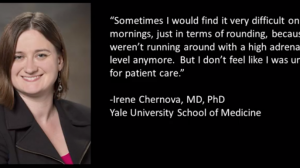NEW YORK (Reuters Health) – Subthalamic nucleus stimulation (STN) is more effective in relieving t motor symptoms of Parkinson’s disease than unilateral pallidotomy during long-term follow-up, physicians in The Netherlands report in the July 14 issue of Neurology.
In an earlier report, Dr. R. A. J. Esselink, from Radboud University Nijmegen Medical Centre, and colleagues presented the 1-year results of their multicenter, randomized trial comparing the two types of surgery, showing that bilateral STN is more effective than pallidotomy. The current report presents findings after 4 years of follow-up.
Included were 14 patients who underwent pallidotomy and 20 who underwent STN stimulation. Four patients in the pallidotomy group died before the end of 4 years, as did two patients in the STN group, and three patients in the pallidotomy group switched to STN after 18 to 40 months because of disease progression.
In the intent-to-treat analyses, the median off-phase motor Unified Parkinson’s Disease Rating Scale score improved 27% in the pallidotomy group and 46% in the STN group. The difference in change scores between the groups was 18.5 points (p = 0.04) favoring STN treatment.
Likewise, the median on-phase motor score worsened by 40% within 4 years after pallidotomy, whereas it was “about stable at 21 points” in the STN group, with a difference between groups of 6.5 points (p = 0.04).
In the on-treatment analysis, STN still scored significantly more favorably than pallidotomy or pallidotomy plus STN.
Moreover, “the frequency of adverse events was approximately the same for both treatments,” Dr. Esselink and associates report. Two severe adverse events occurred in the pallidotomy group – suicide in one patient and development of dementia in another. One patient in the STN group developed cognitive and behavioral problems immediately after surgery, and two patients developed dementia.
The most frequent adverse event associated with pallidotomy was drooling, which occurred in six patients and persisted in three. In the STN group, the most common adverse event was emotional lability, which occurred in six and persisted in three patients.
Reference:
Neurology 2009;73:151-153.




